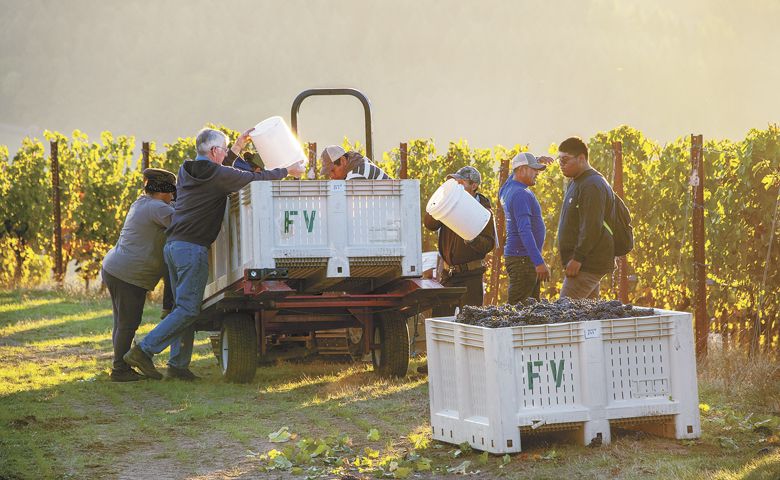Momentum Continues
Industry report reveals impressive numbers for 2018
In mid-September, the Oregon Wine Board released its annual Oregon Vineyard and Winery Report; data was gathered by the Institute for Policy Research and Engagement (IPRE) at the University of Oregon.
The study revealed continued momentum throughout the state’s industry in 2018. While the North Willamette Valley leads in quantity of vineyards and wineries — 651 and 503, respectively — some 793 wineries now exist across the state with 24 added last year. Wineries in the South Willamette Valley grew by 16, representing the biggest regional jump in 2018, now totaling 89 in the region.
Total planted acreage increased by almost 6%, nearly 2,000 acres, from 33,996 to 35,972, showing a healthy confidence in viticulture. The highest growth rate in planted acreage in 2018 was found in the Umpqua and Rogue valleys, with 10% more acres this year over last.
Last year’s sales growth trend echoes that of recent Nielsen data, revealing sales of Oregon wine at U.S. retail rising 12% in 2018 compared to the total table wine category’s performance of -0.6% versus the previous year.
For the first time, the estimated value of Oregon’s wine grape crop topped the $200 million mark in 2018 at $208 million, up from $192 million the year prior, an increase of 8.8%. IPRE researchers also found that Oregon wine sales expanded from $550 million in 2017 to $607 million last year, lifted by a 19% increase in direct-to-consumer shipments, according to the Sovos/Wines Vines Analytics 2019 Direct-to-Consumer Wine Shipping Report.
Pinot Noir continues to reign supreme among varieties, with more than 20,000 acres planted, representing a modest 5% jump. The leading variety accounts for 56% of all planted acreage and 58% of 2018 wine grape production. Oregon’s second-most planted variety, Pinot Gris, grew by 4% this year, now with 5,078 planted acres. Merlot grew by 26% in planted acreage; Cabernet Sauvignon, 25%; Syrah, 21%; Cabernet Franc, 16%; and Chardonnay, 13%.
New varieties that made their way to the chart for the first time include Albariño and Gamay. Viognier added almost 100 more planted acres, an increase of 38%.
Exports play a special role in Oregon wines’ recognition on the international stage. Canada leads the export market, accounting for 45% of export sales, translating to 47,338 cases of Oregon wine. Notable growth was tallied in Scandinavian markets, with a 59% increase in wines exported to Denmark; and Asia, with 15,258 cases of Oregon wine exported, showed increases to Japan, China, Hong Kong, South Korea and other Asian countries.
Tom Danowski, Oregon Wine Board president, noted industry momentum is due to the increasing recognition of Oregon’s reputation for quality and consumers’ willingness to seek out and pay for exceptional wines. He says, “Visit any winery or vineyard now in the midst of harvest, and it’s easy to see the skills, experience and extra effort from winemakers, vineyard managers, growers, tasting room staff and everyone involved in the process of crafting Oregon wines.”
The complete report is available on the OWB website, with past years’ reports dating back to 2005: industry.oregonwine.org.











